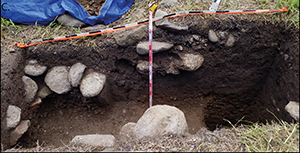Article contents
Ideal distribution models and the tempo of agricultural development in a windward valley of Hawaiʻi
Published online by Cambridge University Press: 23 August 2023
Abstract

Across the Pacific, agricultural systems have used two main complementary cultivation regimes: irrigated farming of wet environments and rain-fed cropping of drylands. These strategies have different productive potential and labour needs, which has structured their temporal and spatial distributions. Although these approaches have been studied a great deal at a general level, there has been less work on the local use and significance of these strategies. Here, the authors evaluate ideal distribution models of agricultural activities in the Punalu‘u valley on O‘ahu, Hawai‘i, to assess how habitat suitability changed as a result of infrastructural investment and dynamic environmental, social and demographic change. The results are of relevance for contemporary initiatives to revive Indigenous agricultural systems in Hawai‘i and beyond.
- Type
- Research Article
- Information
- Copyright
- Copyright © The Author(s), 2023. Published by Cambridge University Press on behalf of Antiquity Publications Ltd.
References
- 1
- Cited by


